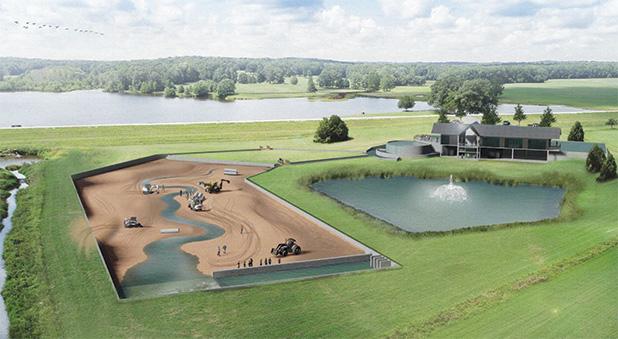
The WET Center
Hardeman County has been selected for a state-of-the-art $28 million facility that will train people involved in managing water and soil to design and install infrastructure that is more resilient to stormwater.
The Center will represent a collaborative project led by the West Tennessee River Basin Authority (a division of the TN Department of Environment and Conservation) and the University of Tennes- see Institute of Agriculture. A Center director will be responsible for all aspects of the Center, including workshop content, delivery, and marketing. Additional staff will be hired as appropriate for the volume of workshops.
With plans to construct it at Lone Oaks, the WET Center consists of indoor classrooms and an outdoor laboratory featuring a system of tanks and flumes to simulate stormwater events. Each reservoir will have a capacity of one million gallons, capable of sustaining a continuous flow from 0-40 cubic feet per second with higher flows for up to one hour. The facility will be able to run up to three full-scale flood releases per day. The primary customers will be those responsible for designing, installing, and maintaining water infrastructure on city, county, state, federal, or private lands. Examples of potential customers include city managers, county road supervisors, equipment operators for city/county departments of public works, farmers, civil engineers, landscape architects, and private contractors. In addition, the WET Center will partner with a number of national organizations to offer specialized training opportunities, including topics like aquatic organism passage (AOP), stream restoration, and swift water rescue. The Center will also collaborate with the STEM education program at Lone Oaks Farm to offer programs in engineering for K-12 students across the region.
Managing stormwater, erosion, and flooding involves a wide range of people in municipalities, counties, state and federal agencies, universities, and private landowners. The successful performance of simple structures like road culverts requires an understanding of basic principles in hydraulics and erosion but there are no facilities or programs that provide training on these topics. As a result, such structures commonly fail, leading to localized flooding, damage from erosion, loss of time and money to reinstall, temporary shutdown of roads and highways, sedimentation of local rivers and streams, and other negative impacts.
